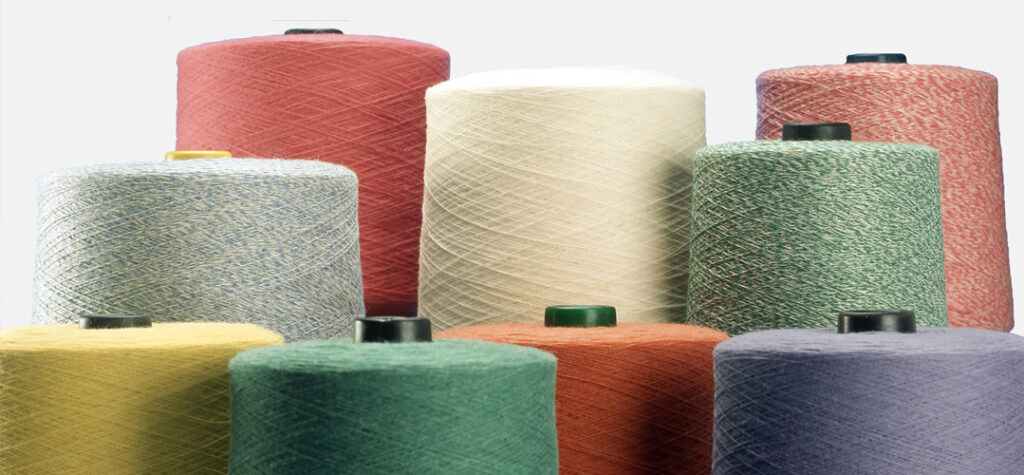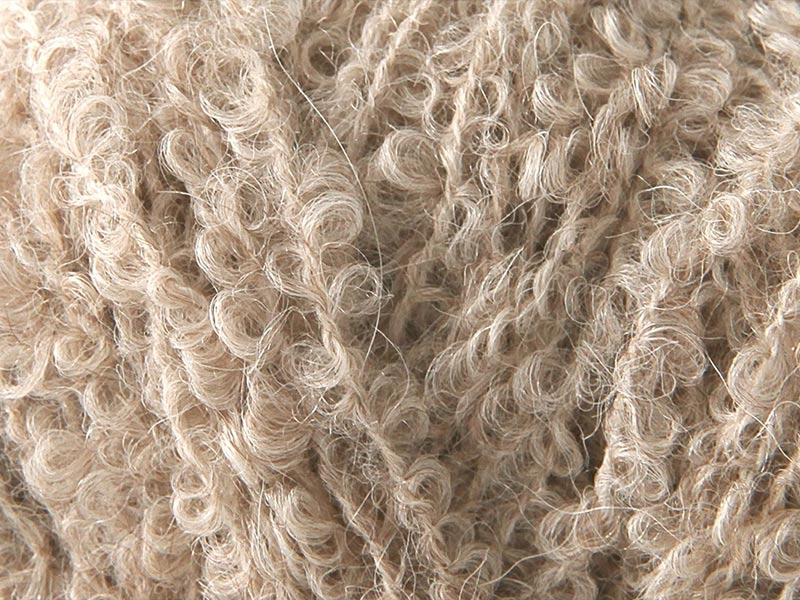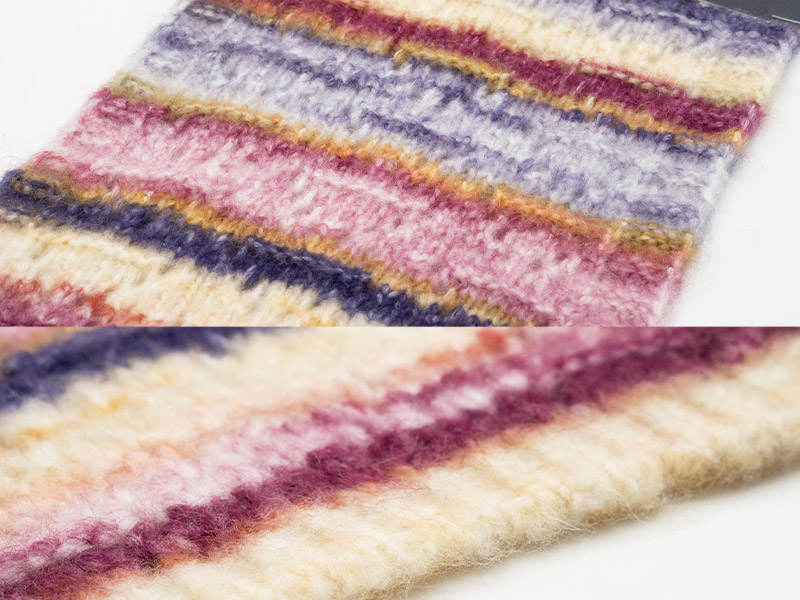Combed vs Carded Yarn: Key Differences for Textile Manufacturers & Yarn Buyers
In the textile and yarn business, it is important for designers, manufacturers, and hobbyists to know the difference between combed and uncombed yarn. “Combed” and “uncombed” (or “carded”) are two ways to get fibers ready to be spun into yarn. These methods of preparing yarn have a big effect on its quality, texture, strength, and ability to be used in different ways.
If you want to make soft clothes, tough work clothes, or fancy knits, you need to know the difference between combed and uncombed yarn so you can make the best choices for your projects. We will talk about the main differences, pros and cons, common uses, and how to pick the right type of yarn for your needs in this article.
What Is Combed Yarn?
After carding, fibers are combed to make combed yarn. Combing is the process of using fine-toothed combs to pull out short fibers, straighten the ones that are left, and line them up so that they are parallel to each other. The yarn is now smoother, stronger, and more even.

Key Features of Combed Yarn:
1. Smooth and Even Texture
Removing short fibers and lining up long fibers makes a clean, even yarn that is perfect for fine knitting or weaving.
2. Enhanced Strength
Combed yarn is stronger and lasts longer than uncombed yarn because it only has long, straight fibers.
3. Soft Hand Feel
The lack of short fibers and neps (tiny knots of fiber) makes the texture softer and more luxurious.
4. Higher Quality Appearance
Fabrics made from combed yarn often look more polished, hang better, and don’t pill as easily.
Common Applications
- T-shirts and tops of high quality
- Fine knitwear
- High-quality socks
- Lightweight woven materials
- Clothes for babies and kids
Additional Notes for B2B Suppliers: Combed yarn is a popular choice for high-end clothing brands that want their clothes to feel smooth, be of consistent quality, and last a long time. Suppliers can meet the needs of the fashion, sportswear, and baby clothing markets by offering a variety of counts and blend ratios.
What Is Uncombed Yarn?
Carded yarn, also known as uncombed yarn, is made by spinning fibers that have only been carded. Carding separates, cleans, and slightly lines up fibers, but it doesn’t get rid of short fibers or neps like combing does. Because of this, yarn that hasn’t been combed stays more naturally variable.
Key Features of Uncombed Yarn:
1. Slightly Rougher Texture
It has more short fibers, which makes it feel bulkier and fuzzier.
2. Good Insulation
Heavier fabrics with more fibers trap more air, making them warmer and softer.
3. Economical
It costs less because it doesn’t need as much processing as combed yarn.
4. Rustic Appearance
Small flaws add texture, making it perfect for casual or textured fabrics.
Common Applications
- Sweaters and cardigans
- Warm blankets and throws
- Casual jackets and hoodies
- Rustic or textured scarves and shawls
- Upholstery or heavy-duty knit fabrics
B2B Perspective: Uncombed yarn is great for making a lot of casual clothes, winter clothes, and home textiles because the texture and warmth are more important than the smoothness. Manufacturers can keep their prices competitive while still offering high-quality goods because it is cost-effective.
Combed vs Uncombed Yarn: Side-by-Side Comparison
Feature | Combed Yarn | Uncombed (Carded) Yarn |
Fiber Alignment | Parallel, uniform | Less uniform, short fibers included |
Smoothness | Very smooth | Slightly rough or fuzzy |
Strength | High | Moderate |
Softness | Soft, luxurious | Soft but more textured |
Appearance | Refined, even | Rustic, natural |
Cost | Higher due to extra processing | Lower, economical |
Applications | Fine apparel, lightweight knits | Warm, casual clothing, textured fabrics |
Pilling | Less prone | More prone |
Benefits of Combed Yarn
High-Quality Fabric: Great for clothes that need to look polished and feel smooth.
Durability: Stronger fibers make clothes last longer and break less.
Soft and comfortable:great for clothes that touch your skin, like T-shirts or baby clothes.
Better Dye Uptake: The smooth surface lets the dye spread evenly, which makes the colors more vibrant.
Benefits of Uncombed Yarn
Warmth and Insulation: A bulkier fiber arrangement traps air, which makes it warmer.
Cost-Effective: Bulk orders cost less to make because they don’t need as much processing.
Textured Look: Gives sweaters, throws, and casual clothes some personality.
Cost-Effective: Less processing means less energy and resource use, which is good for the environment.
Flexibility in Blending: When mixed with synthetics like polyester, it makes fabrics that are strong, warm, and cheap..
Choosing the Right Yarn for Your Projects
When deciding between combed and uncombed yarn, consider the following:
Use: Combed for fine clothes and delicate knits, uncombed for warm casual clothes or fabrics with a lot of texture.
Budget: Combed yarns are more expensive because they have to go through more steps. If you’re on a tight budget, choose uncombed yarn.
Texture and Appearance: Combed yarn makes fabrics that are clean and polished, while uncombed yarn makes fabrics that are bulkier and more rustic.
Care Requirements: Combed yarn is easier to care for because it doesn’t pill as much. Uncombed yarn may need to be handled more gently.
Options for Blending: You can mix both kinds with cotton, polyester, or other fibers to make them work better..
Applications in the B2B Textile Industry
Combed yarn for high-end clothing and uncombed yarn for casual, winter, or textured collections.
Throws, blankets, and cushions often use uncombed yarn for bulk and warmth. Finer woven fabrics use combed yarn.
Uncombed yarn can be used in utility textiles, insulation materials, or knitwear that is sold in large quantities.
Fashion Accessories: Scarves, hats, and shawls can be made with either type of fabric, depending on how warm and soft you want them to be..
Conclusion
In the textile industry, combed and uncombed yarns each have their own uses. Combed yarn is smooth, strong, and looks great, which makes it perfect for high-end, lightweight clothes and fabrics. Uncombed yarn is warm, thick, and has a rough texture that works well for casual clothes, home textiles, and making things cheaply.
Offering both types of yarn gives designers, manufacturers, and B2B suppliers the flexibility to meet a wide range of market needs. You can choose the yarn that best balances quality, cost, and function by knowing what makes each one unique. This will make sure that the finished products meet both aesthetic and performance needs.
Choosing the right yarn, whether it’s combed or uncombed, can have a big impact on how comfortable, long-lasting, and satisfying the final product is for customers. For yarn suppliers and manufacturers, this information is very important for giving advice to customers, making the most of production, and providing textile solutions that meet market standards..
Related News
Discover more about the latest developments in the yarn industry, explore articles on development trends and innovative technologies, and provide you with more industry insights.

The Secret Behind “Fuzzy Yarns”: How Different Fancy Yarns Make Soft, Fluffy Textures
In the fall and winter, nothing feels warmer or more welcoming than yarns with a soft, fuzzy touch. These “hairy” fancy yarns not only add warmth to any fabric, but they also give it a sense of texture, depth, and life. But how do these fluffy effects happen?
Let’s take a closer look at five common types of fuzzy fancy yarns: crochet yarn, blowing yarn, raised yarn, sueded yarn, and bouclé yarn. We’ll talk about how each one gets its unique surface effect, how comfortable it is, how much it costs, and what it’s good for.This guide will show you the best types of yarn to use for summer projects, compare their features, and give you some fun ideas for your next collection or DIY project.

Wool Acrylic Blend Yarn: Benefits, Uses & Wholesale Sourcing Guide
The choice of fiber in the textile industry affects not only the quality of the finished product, but also how well it works, how much it costs, and how much people want to buy it. Wool and acrylic are two of the most popular fibers, and each has its own benefits. Wool is known for being warm, strong, and breathable, while acrylic is known for being strong, cheap, and easy to care for.

What Is Tape Yarn—and Why You’ll Love It
Tape yarn, tape-like fiber that offers a distinct texture and lightweight structure, making it a popular choice for summer knits and fashion-forward patterns. Unlike traditional round yarns, tape yarn spreads more surface area across your stitches, creating a more dramatic and openwork appearance. But what is tape yarn used for exactly, and how can you make the most of it in your knitting or crochet projects? Let’s dive in.

